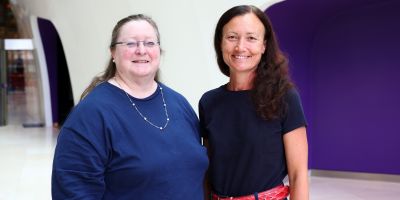Achieving net-zero carbon by planting trees

“When people think about forests capturing carbon, they tend to focus on the tropical rainforests, like the Amazon,” says Dr Cat Scott.
“But forests in different parts of the world affect the climate in different ways. In the UK and other temperate parts of the globe, we have carbon stored in our own woodlands – and the capacity to capture more.”
Dr Cat Scott graduated the School of Chemical and Process Engineering’s Energy and Environment MSc in 2009 before studying a PhD that examined the impact of forests on the atmosphere and environment. Dr Scott is now a University Academic Fellow based in the University of Leeds’ world-leading Priestley Centre, where she researches ways to mitigate climate change through changing the use of land.
The Northern Forest
Dr Scott’s latest research involves planting 50 million trees to support the UK’s ambition to reach net-zero carbon emissions by 2050. The project, called “Northern Forest”, involves creating a woodland that stretches from the Mersey to the Humber.
“While we must ultimately get emissions down to zero, in sectors like agriculture and aviation it’s going to be difficult to do this as quickly as necessary. We can’t currently fly without using fossil fuels,” she explains. “But by expanding areas of woodland you can take some of this carbon out of the atmosphere, and by combining this with reduced emissions elsewhere it is possible to achieve that goal of net-zero emissions overall.”

The development of new woodlands is backed by extensive research, particularly focusing on how much carbon trees can store. Using this understanding allows scientists to calculate the optimum land use and number of trees needed to help mitigate climate change.
“We can look scientifically at how much carbon trees and woodlands are likely to store. We can say: ‘if you plant ten hectares of woodland it will capture this amount of carbon’ – and you can build these calculations into a hierarchy of what the land could be used for.
“For example, could farmers introduce more trees to their land or do we need to convert other areas into new woodland?
“We try to bring people together to build collaborations and help organisations make decisions that are underpinned by the latest science. Rather than doing the research in isolation, we work with external organisations – business, charities, regional governments and landowners to collectively work out the best way forward.”
Learn more about Dr Cat Scott’s work
In the webinar below (recorded on 9 March 2021), Dr Cat Scott discusses how trees and forests can help achieve net-zero on a local and national scale. The talk is part of the recent Meet the Researchers: Achieving Net-Zero webinar series and this event was chaired by Professor Stuart Taberner.
You can also hear more about Dr Cat Scott’s work in an article here.




